Our story begins when I was in middle school and took a basic sign language class. I loved this manual language, and it’s amazing how the signs stuck with me for the next 25 years. But my husband was the first one of the two of us who had a heart for adoption. Between us, God began molding our hearts into the family He desired us to become.
We used baby signs to encourage our three biological children to communicate as babies and toddlers, and even though we weren’t fluent (not even close!) and had only one connection to the Deaf community, we felt that God told us to say “yes” to a child from China who was deaf.
RenYu, now named Graham, had just turned four years old when we travelled across the globe to get him. We fought so much fear during the months leading up to travel, knowing that we were not trained to teach someone a first language when we were amateurs still learning it as a second language.
I especially needed to grieve the fact that he would probably never know music. We are a very musical family, some of our favorite family memories are because of music, and it has been so therapeutic during difficult times. We were facing a forever future of Deafness in our family – not just a simple surgery or two to endure.
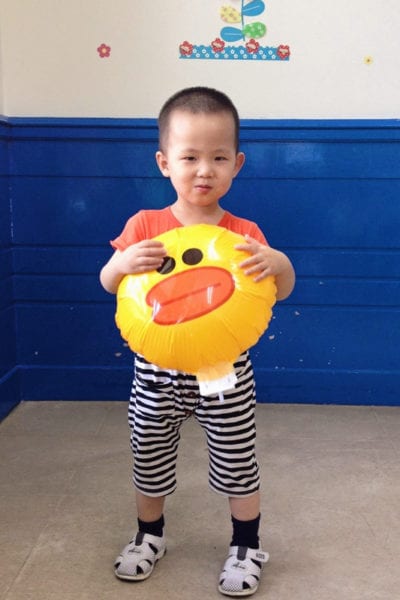
It was the middle of summer when we went to China. Meeting this little boy was a small taste of heaven, and he gave us the cutest little shy smile when we invited him onto our laps in that government office building. His demeanor changed quickly though as we brought him with us onto the elevator and out the doors into a strange van, without the familiar mamas he had learned to trust and follow. He refused to be held, and we could tell he was nervous by the loud grinding of his teeth as we travelled the streets of Shanghai.
We discovered that our son had learned to be extremely independent, but thankfully the little toys we brought and the big brother who came along kept him close by our family during the tumultuous change he experienced during the transition to the United States and a new family.
Since coming home, we have experienced many of your highs and lows in welcoming a preschooler as a new son and sibling. However, this seemed so different from other stories we heard. We naively thought that our son would be an enthusiastic sponge as he saw language on our hands and with our bodies. We thought surely his new language acquisition would be even faster than most hearing Chinese adoptees… he didn’t have a language to unlearn!
And this is where we found we were gravely wrong. When a child is not given any language, they don’t understand what language does. They don’t understand the meaning of language. They’ve gotten along “fine” without it, why start something new now?
Hearing children who learn a new language already have a language base to start from, they have purpose and merely shift that purpose into new sounds. They know what a question is, they know what an answer is, they know that they can ask and answer. They know that people have names, objects have names, and places have names. They can differentiate imaginary language from reality, and give reason to their emotions. Graham needed to understand the importance of a communication that wasn’t biting, taking, screaming, or withdrawing.

Our family had taken three sign language classes together before and immediately after the adoption, and were working together and with Graham to improve vocabulary and exposure. However, after a year with us, he only initiated a small vocabulary of signs – maybe 25 – and most of those were food related. He loved to learn food signs, but anything else was completely uninteresting. He did not notice animals, we were suspecting that he was color blind, he disliked watching cartoons, and he hated looking at books.
He was enrolled in our school district’s early childhood education program four days a week with a sign language interpreter, and gradually learned proper classroom behavior. We spent that year learning to draw him out by doing his favorite activities: tickling, bathing and swimming, games of chase, and cooking or baking in the kitchen.
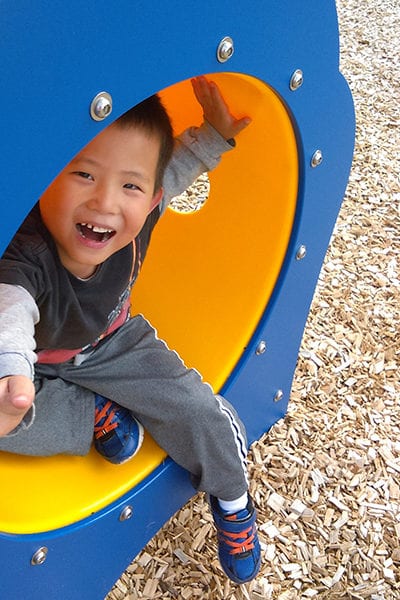
During the first few months home, Graham did undergo a couple of long, inconclusive hearing tests before we finally made the trek to the Children’s Hospital for a sedated ABR (auditory brainstem response) test. They concluded that yes, he had profound hearing loss in both ears.
After much research and observation, we then pursued the steps needed for cochlear implants. A month before his fifth birthday, surgery was performed in both ears. This was one of the hardest decisions we have ever made. If you haven’t heard, there is a lot of disagreement about surgery for cochlear implants, as well as many unknowns about the results of such an invasive surgery. The decision we made for our son would, without a doubt, impact him positively and negatively for the rest of his life. We bore the responsibility to decide whether the unknown “pros” would outweigh the unknown “cons”.
Our personal decision rested on the surgeon’s diagnosis of the cause of his deafness and the potential for vision loss later in life; the permanence of our circle of support from hearing friends, family, and fellow adoptive families, and our desire to provide Graham with every opportunity available to him, allowing him to ultimately make the choice to retain or decline his “hearing” ability after presented with the technology.
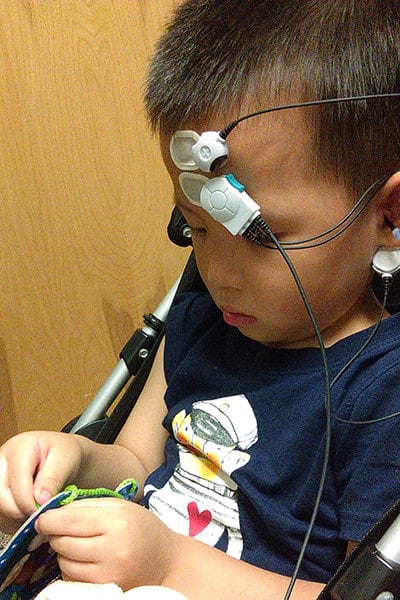
One month after surgery was “activation”. This is when the implants get connected with the outer equipment (processors) that enables access to sound. What an exciting day!
Graham, per his usual tendency to show little emotion, expressed only a little interest. But he was always aware that something was happening, showing some anxiety, and even showed some excitement when hearing Daddy’s voice for the first time.
Thus began the next step in the narrative of his story.
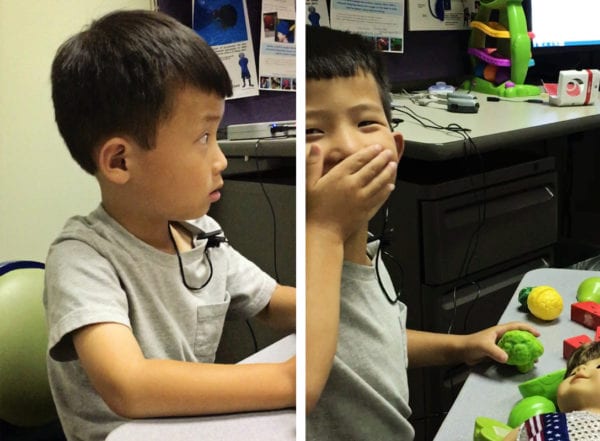
Since activation 16 months ago, Graham has for the most part let us know that he prefers to keep his processors off, which means he does not want to hear what is happening around him. We have phases of him keeping them on without argument for much of the day, and then phases where every time he’s out of sight he pulls them right off. Sometimes they will be off (creatively attached to his glasses though, because we are afraid to lose them!), but he will connect them for just a second out of curiosity of what is happening around him. Lately, he might keep them on unless he hears music or a truck driving by.
By now, many other children will be trying to form words with their voice, but Graham has not wanted to do that. By now, many other deaf children will be expressing themselves and seeking answers to questions in sign language. Graham occasionally asks us for a snack, or asks where a sibling is during a game of hide-and-seek, but rarely do we see another question formed on his hands.
This year he is in full-day kindergarten, and his interpreter has done a fabulous job of including the other children and teaching them sign language. They pick it up quickly. Graham’s receptive skills are getting better, but for a 6-year-old (2-year-old to language), he is still only at about 135 vocabulary words right now that he initiates. We are hopeful that his language explosion will come, and he will excitedly seek out answers to questions about how, why, what, where, and who.
Having a deaf child means adjustments to family life that were normal for us for many years. Deaf children don’t find amusement in rhyming books, so we need to get creative in finding ways to sign a story that captures the attention similar to rhyming might for a hearing child. We need to be very intentional in giving information, because Graham doesn’t receive information as easily as the rest of the family when they hear about the plans for the day. We need to express our feelings to him specifically so that he understands when we are playing and when we are not. We need to be intentional about teaching how interactions work with a cashier or a stranger or a librarian.
These are all things we are still learning and internalizing ourselves, and we have a long way to go before I can say we have provided full access to our deaf son. Even the habit of providing interpreters for him at doctor’s appointments hasn’t been established – partly because of his resistance to communication and his habit of ignoring anyone who is trying to sign to him.
So, is being deaf his main special need? No, I don’t believe so. Being deaf means that he will communicate differently – his first language will not be English or Chinese. Being deaf means that he will need a few different accommodations to daily life, school, and work. Things need to either be visual or felt. Being deaf means that he will feel more comfortable and let his guard down with people who communicate in sign language.
Graham’s primary special need is language delay. This has been and continues to be the biggest barrier to learning, affection, and communication. Being adopted and deaf has posed some very unique challenges that we have all needed to navigate together.
Life with Graham has been one of the most fulfilling, but hardest, things we have experienced as a family. To see him play with his pretend cookies and watch as suddenly the concept of color clicks in his mind (nope, not color blind!), to see his drawing transform from scribbles to the letters of his name, and then to drawing a stick person within a span of three months…amazing.
He used to wait in his bed every morning for someone to come get him, and just in the last month he has felt the freedom to come running down the hall and snuggle with mom and dad in our bed before the day starts (I mean, real snuggles!). This lifts me up like nothing else ever could!
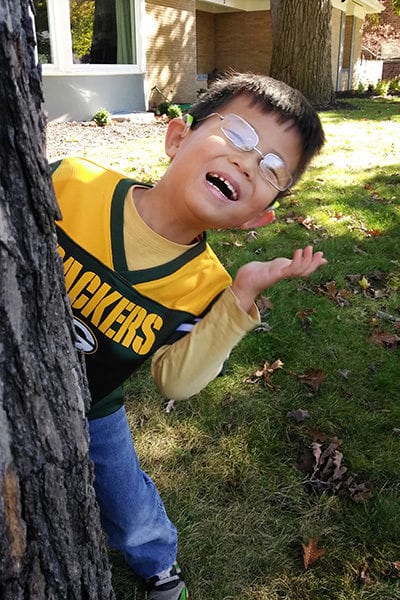
Change is happening – it always has been – but sometimes we are too close to the struggle to see the victories. As our hearts have broken for the children without families and without language, as we work through a second adoption process to bring one of these little ones home, we hope and pray that the world will become more vivid to our Graham.
We hope that he will have friendships that last.
We hope that the people who have shown an interest in him will not give up while he slowly develops an interest in them.
We hope that he will understand that abstract concept, but so real concept, of Jesus’ love and care for him.
It is days like these that we see the clock ticking and feel an urgency like never before. God bless our precious boy.
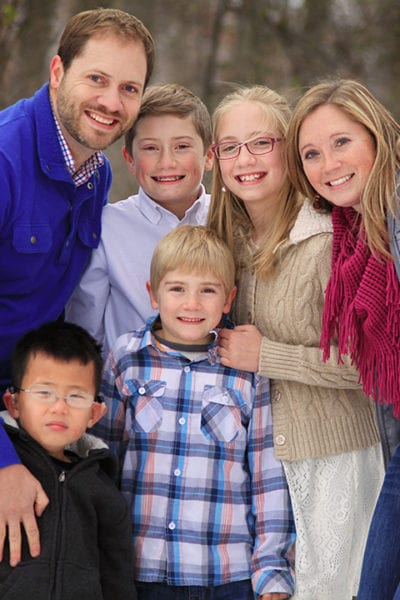
– guest post by Jennifer

























Thank you for sharing your story. This is a special need I have considered and have many questions and concerns about. I appreciate your honesty about your struggles and victories! You have a beautiful family!
I am an adoptive momma and an SLP that works with children who are Deaf and HH. Thank you for giving your child everything——language!!!!! In whatever form he will accept it. He will eventually choose one but how great that he has a choice! Keep signing! Keep talking! God bless your family!